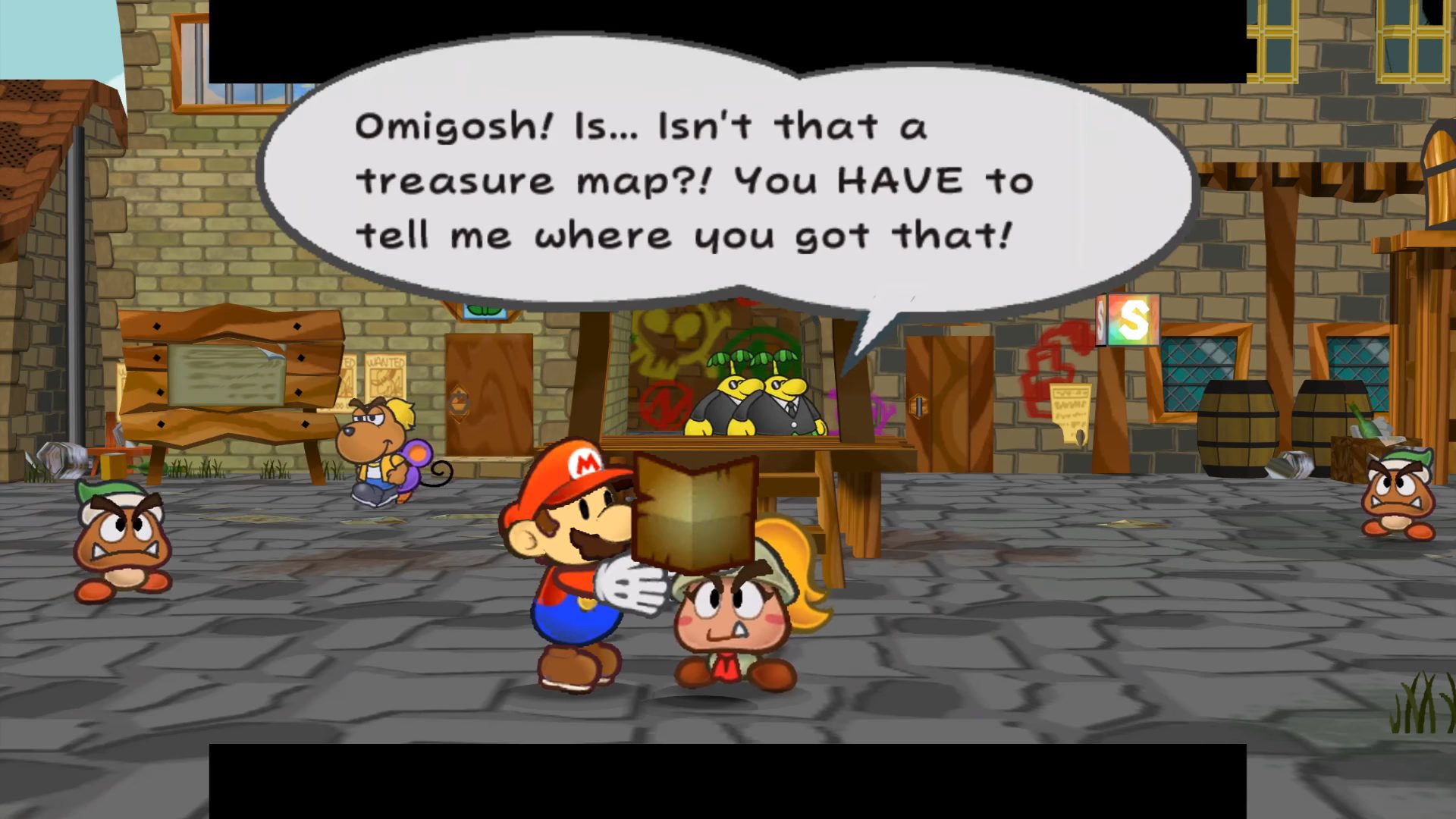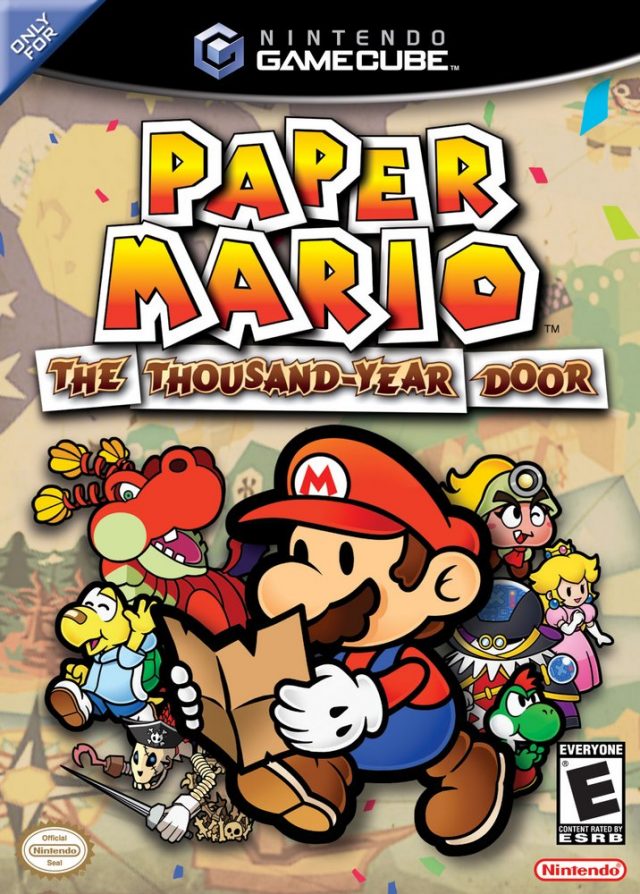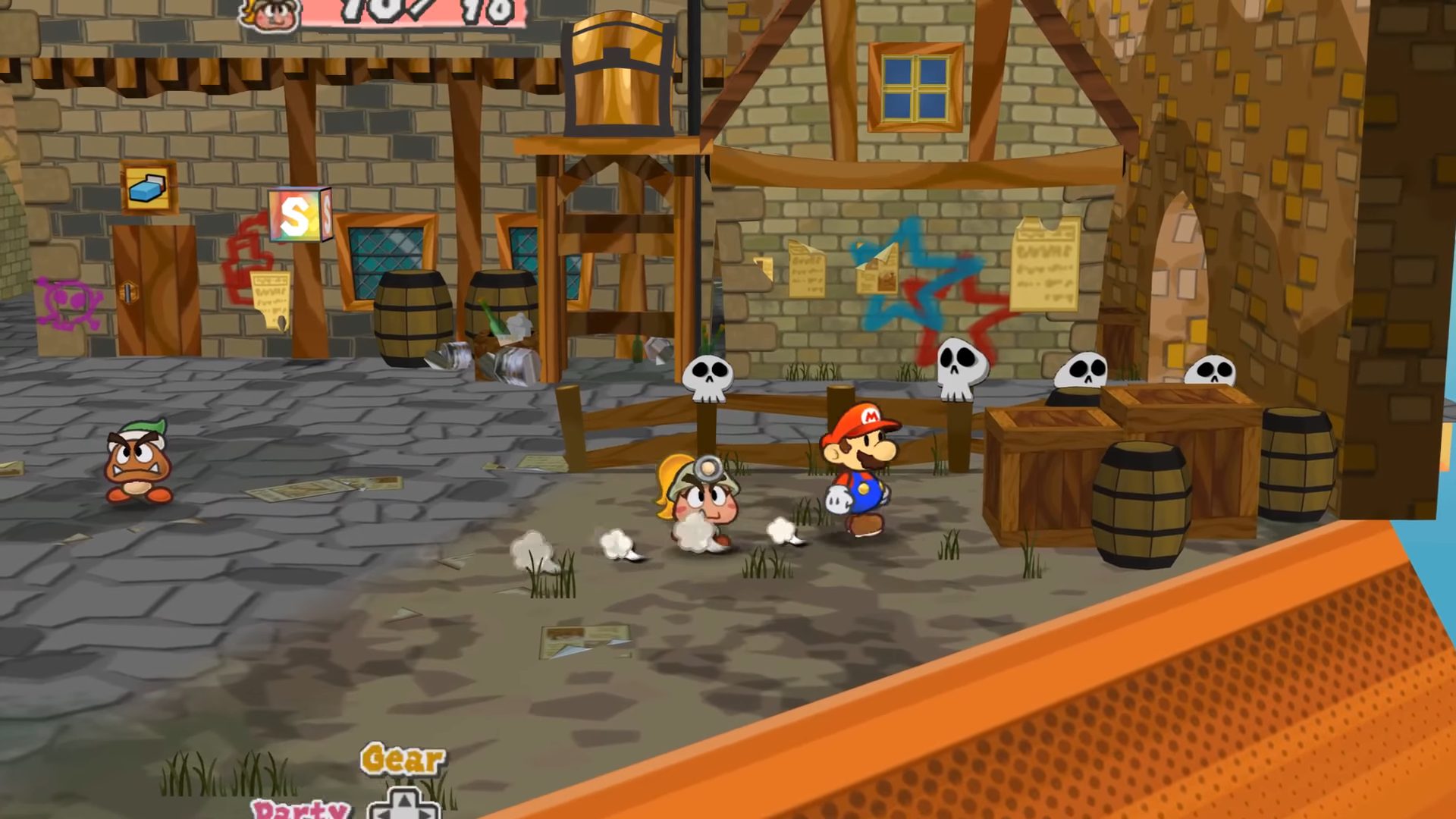

To say that all of that’s happening in some other universe, or worse yet, a book, is doing Mario fans a disservice because it’s saying that everything we’re seeing and doing could easily be non-canonical. That’s important to me as a Mario fan because those first two games were loaded with information about this world that other Mario games only gave us a glimpse of. No one in Paper Mario, TTYD, or Super Paper Mario is physically made of paper in-universe, that’s just how they’re presented to us as the player. This means that the world we’re in could be, and was most likely intended to be, the standard world that any old Mario inhabits, not some other universe with some other Mario. In TTYD, the “curses” that Mario gets are supernatural his ability to fold and bend in strange ways is exceptional, not the standard for all of the characters in the world. In that fateful year of 2012, Paper Mario games shifted from being primarily about Mario to being primarily about Paper, and more specifically, about arts and crafts items found in the same store as paper. If you were to compare all of the references to paper found in the original games, which could mostly be chalked up to fourth-wall-breaking nods to the aesthetic, and all of the references to paper found from Sticker Star onward, the difference would be astounding. To remove the world and characters and dialogue and combat of the first two games and replace all of that with paper is- to extend the metaphor- deforestation, it’s cutting down everything that the first two games had grown. The “paper” look was a means to an end that also happened to carry some aesthetic charm.įocusing on that look so intently that everything else falls to the wayside is missing the forest for the soil.

It’s the game’s presentation, its ability to make 2D characters and a 3D world feel cohesive and purposeful, that made this possible, allowing it to have great combat, and story, and world-building, and settings, and characters. At the time, the game was something of a technical marvel it was rare to see a game so expansive and so complex that could still manage to run on commercially available hardware. Some fans are quick to point out that Paper Mario was originally called “Mario Story” in Japan and just renamed for its international release, but I feel like a lot of people gloss over why the game was renamed.

Making a Paper Mario game about a paper world is a bit like making a sponge cake out of literal sponges (the dish or the sea variety) sure it follows the letter of the name, but it doesn’t follow the spirit, and the end result isn’t something that a sponge-cake-fan would typically want to eat.


 0 kommentar(er)
0 kommentar(er)
